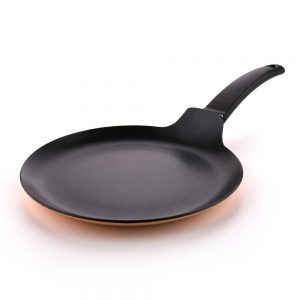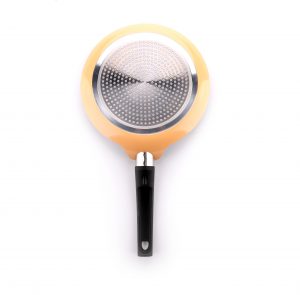The reason why the non-stick pan is not sticky is that there is a layer of paint on the inner wall of the metal. This layer of paint has a small friction coefficient. It has excellent characteristics such as high and low temperature resistance, corrosion resistance, and no water absorption. Its chemical stability is shown in almost all Chemicals are inert, surpassing ceramics, stainless steel, and even gold and platinum. Its high and low temperature resistance can ensure its long-term use in the range of 160 degrees to 250 degrees. This kind of coating was first successfully developed by DuPont of the United States, but then based on it, the first, second and fifth generations appeared. A notable feature of non-stick pans is fuel economy and environmental protection. This is in line with the hypothesis of eating less oily foods advocated by the health industry. The dishes cooked in this way are bright in color, delicious in taste, and non-greasy, which can increase people’s appetite. Therefore, as soon as the non-stick pan came out, it was immediately favored by people. Non-stick pan products can be divided into boiling pans, frying pans, frying pans, and milk pans according to their different functions.
When using a non-stick pan, tear off the logo, rinse it with water and wipe it dry, and apply a thin layer of cooking oil for maintenance. It can be used after cleaning again. When cooking, use heat-resistant nylon, plastic or wooden spatula to avoid sharp spatula from damaging the surface of the non-stick pan. Non-stick cooking utensils transfer heat evenly. Only medium to low heat can cook delicious food. When using high heat, there must be food or water in the pot. After use, wait for the temperature to drop slightly, and then wash with clean water. Do not wash with cold water immediately. Do not use rough emery cloth or metal balls to vigorously scrub.








